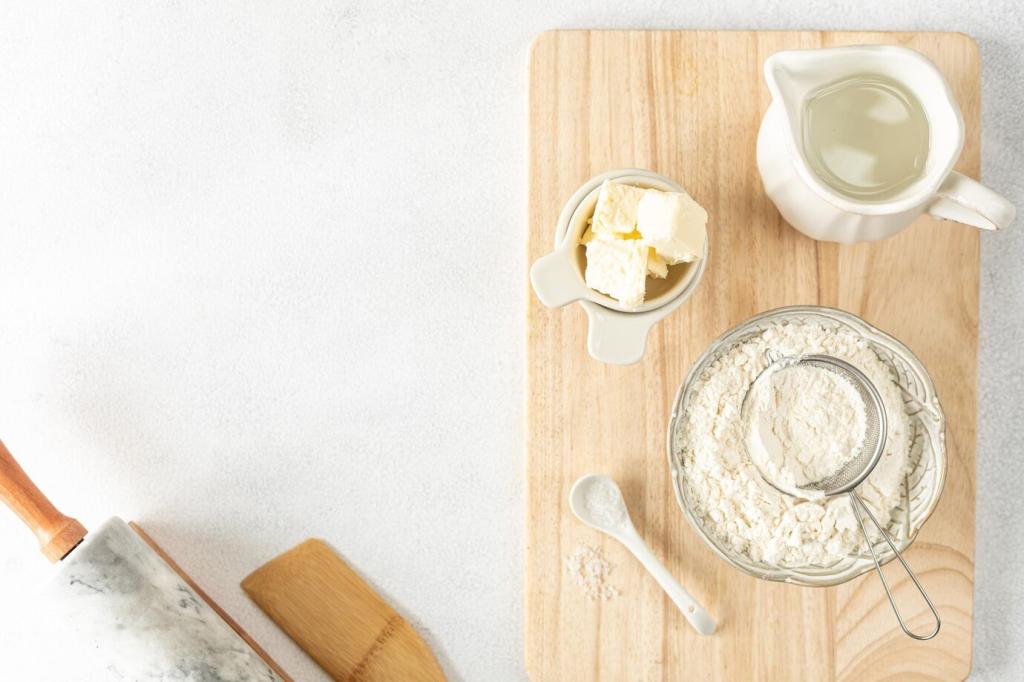
Top Baking Tools for New Home Bakers
Embarking on your home baking journey can feel both exciting and intimidating. Having the right tools at your disposal makes the process smoother, helps you achieve professional results, and ensures you enjoy every step along the way. This guide introduces key baking tools, explains their importance, and will equip you for baking success from your very first recipe. Whether you’re mixing your first batch of cookies or attempting your inaugural loaf of bread, the right tools are just as important as the right ingredients.
Measuring Tools: Precision in Every Recipe
Measuring Cups and Spoons
Measuring cups and spoons are the foundation of precision in baking. Dry measuring cups allow you to scoop and level flour, sugar, and other dry ingredients, ensuring accuracy. Liquid measuring cups, typically made of glass or clear plastic, have spouts and are designed for fluids like milk, water, and oil. Proper use means you’ll avoid the common pitfalls that come from estimating or “eyeballing” ingredients, such as dense cakes or overly dry cookies. Consistent measuring lays the groundwork for repeatable results each time you revisit your favorite recipes.
Digital Kitchen Scale
A digital kitchen scale is an indispensable tool, especially for those wishing to master baking beyond the basics. Unlike cups and spoons, a scale measures by weight, which is more accurate and reliable. Many recipes written by professional bakers feature ingredients listed in grams or ounces, so a scale allows you to follow them closely. This accuracy is particularly beneficial for tasks like dividing bread dough evenly or scaling up recipes with confidence. Plus, weighing ingredients leads to fewer dishes and quicker cleanup.
Thermometers
A thermometer offers peace of mind in the kitchen, ensuring everything from caramel to custards, and even bread, is cooked to perfection. Oven thermometers check that your oven is holding the correct temperature, which is vital since many home ovens can run hot or cold. Instant-read thermometers are essential for baked goods that depend on internal temperature, like yeasted breads, which are done at around 190–210°F. Mastering temperature control protects you from overbaked edges, undercooked centers, and the frustration of wasted time and ingredients.
Mixing Bowls
Mixing bowls provide the space you need to combine dry and wet ingredients efficiently. Stainless steel bowls are durable and light, glass bowls don’t retain odors or stains, and plastic bowls are lightweight and often come with tight lids for storage. Owning a range of sizes means you’re prepared for large bread doughs or small batches of cookies alike. The right mixing bowl sets keep your process clean and organized, giving you confidence and flexibility as you bake.
Hand Mixer or Stand Mixer
A hand mixer or stand mixer is your ally for everything from creaming butter and sugar to whipping egg whites. For new bakers, a basic electric hand mixer is affordable and suits most entry-level needs—speeding up tasks that would be exhausting by hand. Stand mixers, while an investment, offer hands-free convenience and powerful mixing for thicker doughs and large batches. Using a mixer helps you achieve consistent, even blends, resulting in lighter cakes, fluffier whipped cream, and better overall baking outcomes.
Silicone Spatulas
Silicone spatulas are indispensable for scraping bowls clean, folding delicate ingredients, and smoothing batters into pans. Their flexible edges make it easy to get every bit of dough or batter, minimizing waste and mess. Heat-resistant silicone ensures they won’t melt when used with hot caramel or melted chocolate. Durable and easy to clean, spatulas help you maintain the right texture in your mix and allow for efficient, thorough mixing, making them a staple in every baker’s utensil drawer.
Essential Bakeware: The Right Vessels for the Job
01
Baking sheets and pans are the backbone of home baking, allowing you to produce everything from cookies to brownies to roasted vegetables. Rimmed baking sheets are perfect for cookies and sheet cakes, while square and rectangular pans work well for bars and brownies. Non-stick finishes and sturdy construction help with easy release and even browning. Starting with a few core shapes and sizes ensures you’re ready for a wide variety of baking projects, saving you time and preventing frustration over stuck or unevenly baked treats.
02
Muffin tins, or cupcake pans, open up the world of single-serving baked goods. From muffins and cupcakes to miniature cheesecakes and frittatas, these pans make portioning and baking easier and more consistent. Quality muffin tins have strong, non-stick finishes and sturdy construction to prevent warping. Using these pans, your baked goods cook evenly and can be removed with minimal fuss. They are highly versatile and quickly become a go-to tool for breakfast treats, snacks, and desserts alike.
03
Loaf pans are essential for breads, pound cakes, meatloaf, and more. They create the iconic shape and allow batters and doughs to rise beautifully. Available in metal, glass, or silicone, loaf pans ensure even heat distribution and support easy slicing. A standard 9×5-inch loaf pan is an excellent starting point for most recipes and can handle everything from banana bread to classic sandwich loaves. Having a quality loaf pan allows new bakers to experiment with yeasted and quick breads with confidence.
